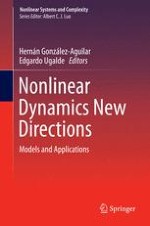2015 | OriginalPaper | Buchkapitel
Homoclinic Ω-Explosion: Hyperbolicity Intervals and Their Bifurcation Boundaries
verfasst von : Sergey Gonchenko, Oleg Stenkin
Erschienen in: Nonlinear Dynamics New Directions
Aktivieren Sie unsere intelligente Suche, um passende Fachinhalte oder Patente zu finden.
Wählen Sie Textabschnitte aus um mit Künstlicher Intelligenz passenden Patente zu finden. powered by
Markieren Sie Textabschnitte, um KI-gestützt weitere passende Inhalte zu finden. powered by
